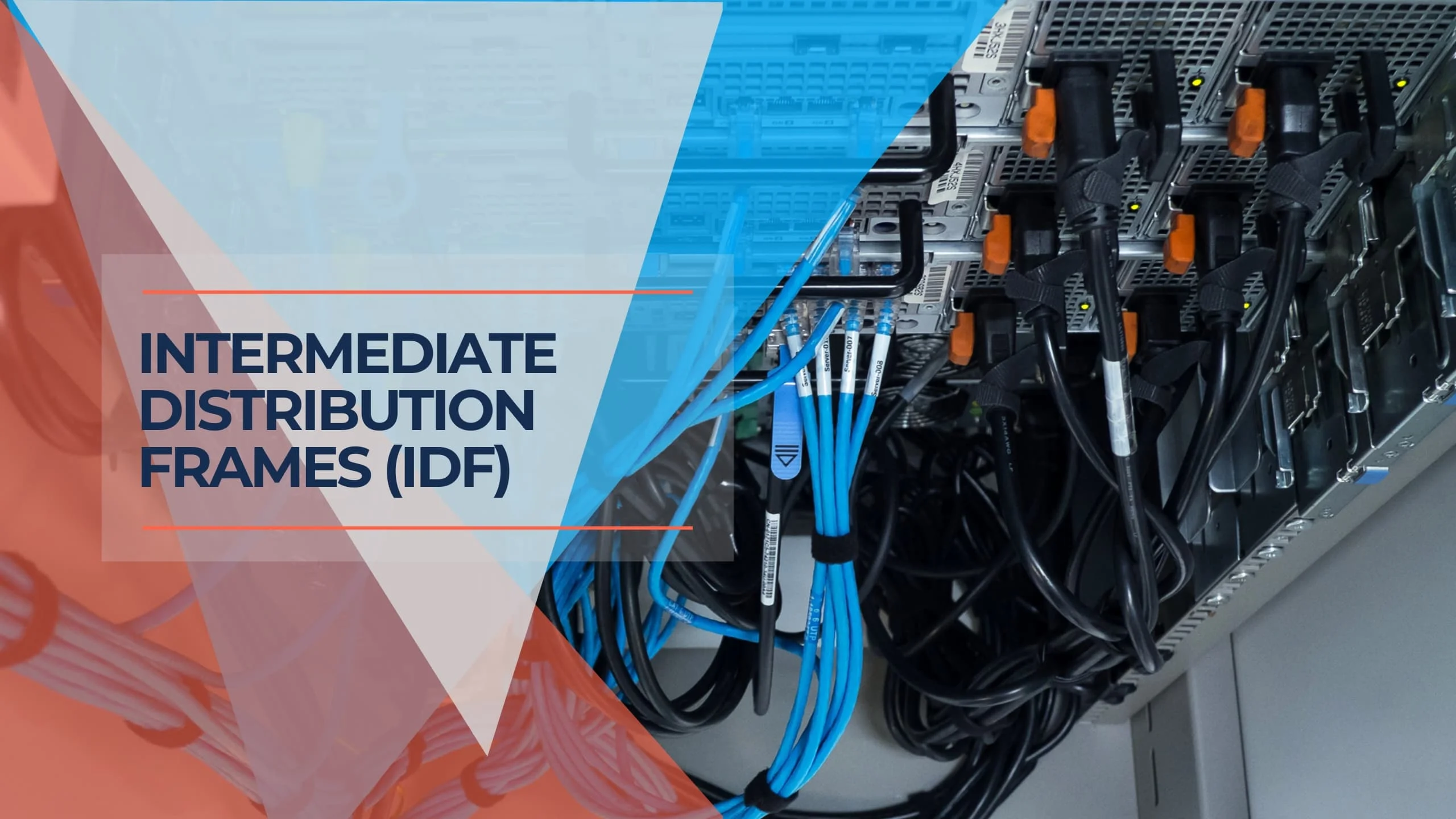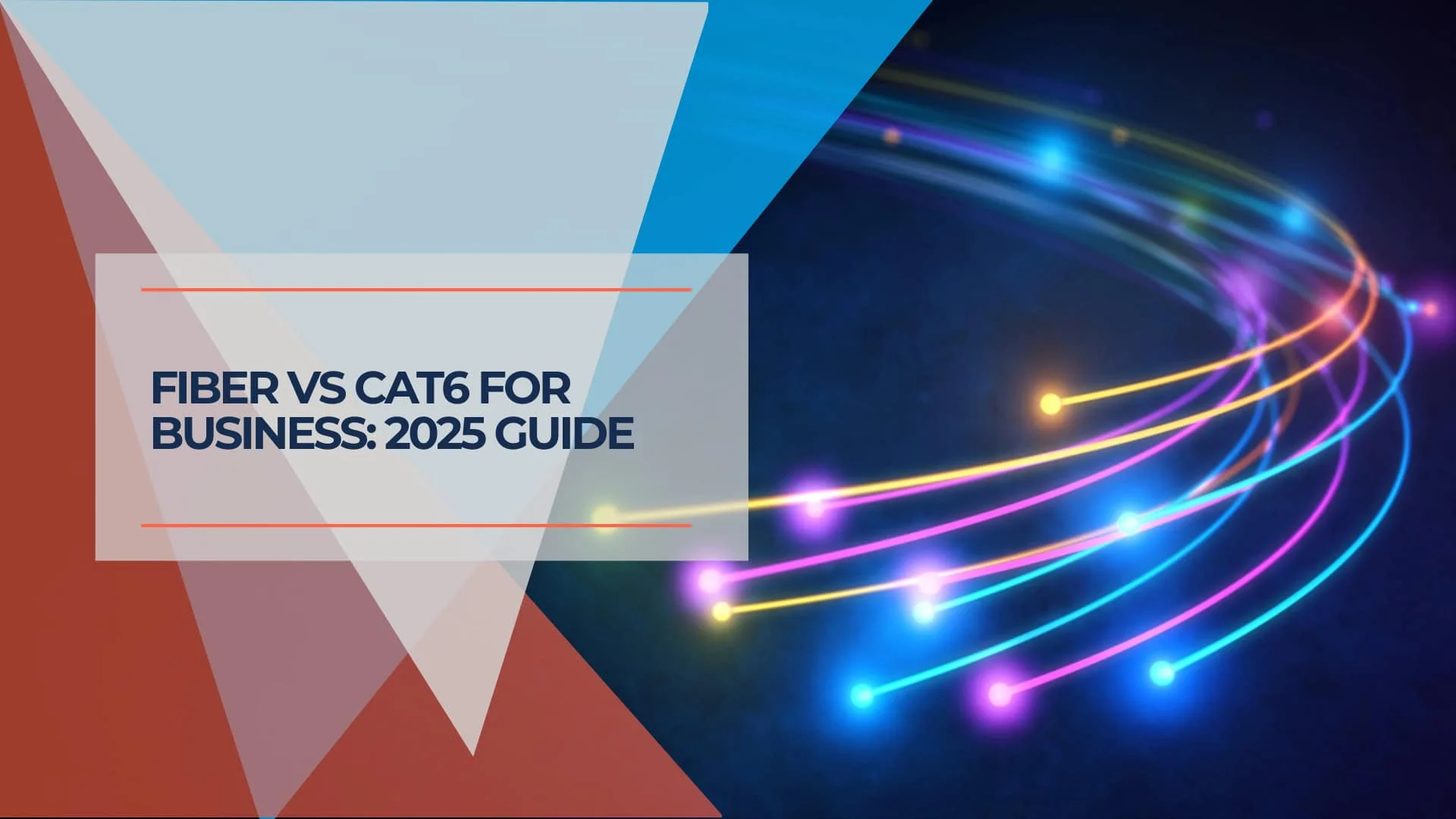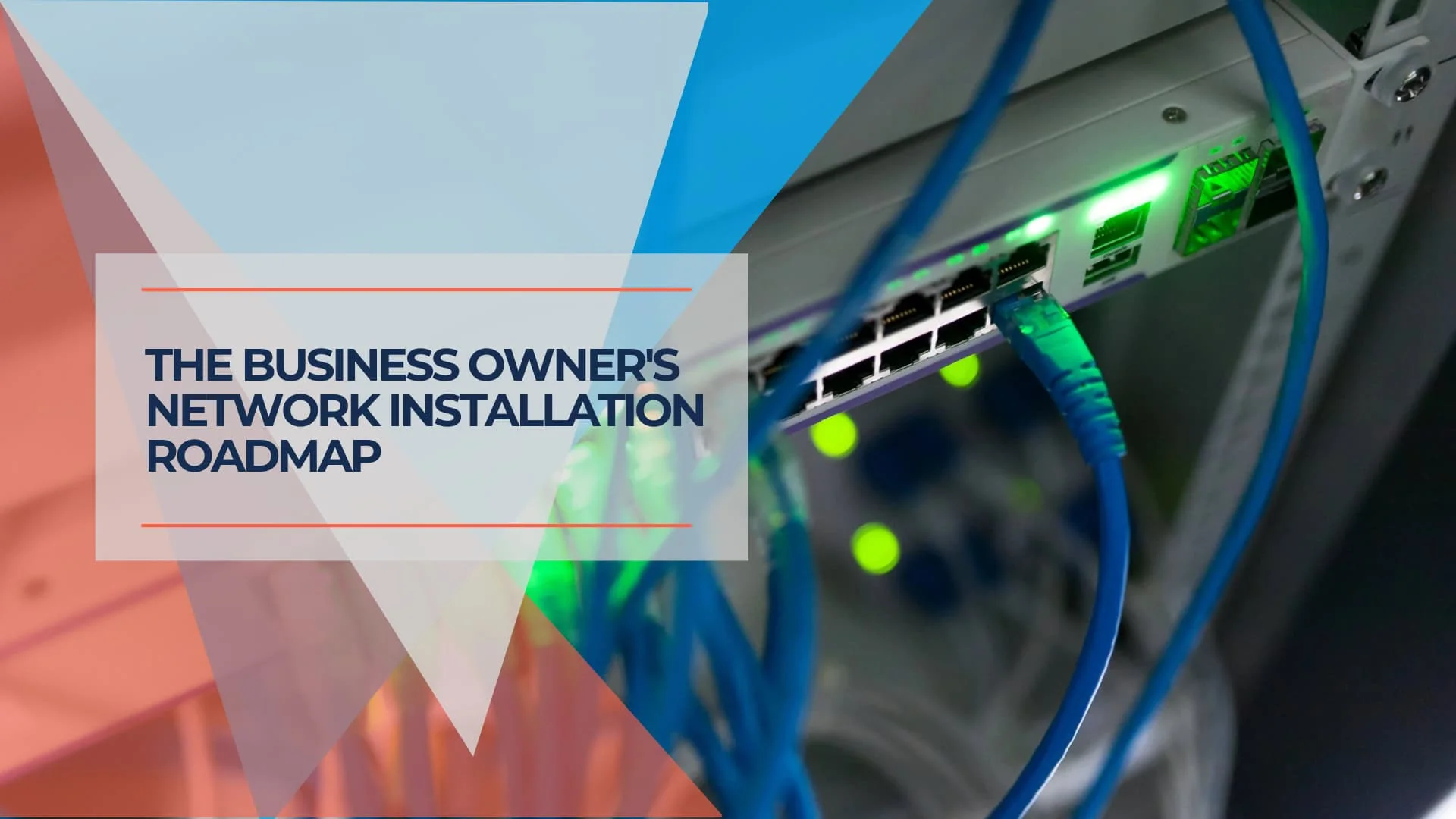Intermediate Distribution Frames (IDFs): Your Network's Backbone
Complete guide to Intermediate Distribution Frames for business networks. Learn about IDF components, design best practices, rack sizing guidelines, and how IDFs organize network infrastructure across multi-floor buildings.


Managing network infrastructure across multiple floors or large buildings presents unique challenges. Cables need organization, equipment requires proper placement, and technicians must access systems efficiently. Intermediate Distribution Frames (IDFs) address these challenges by serving as organized distribution points throughout your facility. For anyone managing business networks, understanding how IDFs work helps create more reliable and maintainable infrastructure.
Key Takeaway
IDFs organize network cabling and equipment into manageable sections, making maintenance easier while supporting network growth and reliability.
What is an Intermediate Distribution Frame (IDF)?
An Intermediate Distribution Frame works as a secondary connection point in your network infrastructure. While the Main Distribution Frame (MDF) serves as your building's primary network hub, IDFs extend connectivity to specific areas like individual floors or departments.
Most IDFs are housed in dedicated telecommunications closets or equipment rooms. Each connects back to the MDF through backbone cabling, typically fiber optic lines that handle high-bandwidth requirements. From there, cables are distributed to end-user devices within that IDF's coverage area.
This approach works similarly to electrical distribution—the MDF acts as your main electrical panel, while IDFs function like subpanels serving specific building sections.
Essential IDF Components
Modern IDFs contain several key components that work together to organize and distribute network connectivity:
Physical Infrastructure
Racks and Cabinets: Wall-mounted racks work for smaller installations, while free-standing cabinets suit larger deployments. These house all networking equipment in standardized mounting configurations.
Patch Panels serve as the connection hub where incoming and outgoing cables terminate. Patch panels allow flexible connections using short patch cords while keeping everything organized.
Active Equipment
Network Switches: Connect end-user devices like computers, printers, and IP phones. The number and type depend on your specific network size and requirements.
Environmental Monitoring: Modern IDFs include temperature and humidity sensors with monitoring systems that alert IT staff to conditions that could damage equipment.
Organization Systems
Cable Management: Horizontal and vertical cable managers, along with rings and ties, prevent cable tangles and make maintenance more efficient.
Labeling Systems: Clear, detailed labels on cables and equipment streamline troubleshooting and maintenance tasks.
Network Equipment in IDFs
IDFs typically house various types of network equipment based on your specific requirements:
Internet Connectivity: Your business internet connection enters at the MDF, then is distributed through IDFs to reach individual devices.
Routing Equipment: Network routers manage traffic between different network segments. Larger networks may place routers in IDFs to handle local traffic efficiently.
Switching Infrastructure: Network switches connect end-user devices within each IDF's service area. These devices forward data only where needed, reducing network congestion.
Security Systems: Firewalls protect against unauthorized access and malicious activities. They can provide centralized protection at the MDF or segment-specific security within IDFs.
Specialized Equipment: Depending on needs, IDFs may contain Power over Ethernet (PoE) switches for IP cameras and phones, wireless access points, or backup systems.
Rack Sizing Guidelines
| Network Size | Recommended Rack Space | Additional Considerations |
|---|---|---|
| Small (Up to 50 devices) | 12U – 24U | Include space for monitoring and UPS systems |
| Medium (50-200 devices) | 24U – 42U | Plan for redundant switches and backup power |
| Large (200+ devices) | 42U+ | May require multiple IDFs with centralized monitoring |
Benefits of Using IDFs
IDFs provide several practical advantages for network management:
Organization: Centralizing cables in designated areas prevents the tangled mess that makes troubleshooting difficult and time-consuming.
Scalability: Adding new equipment or wiring becomes straightforward without significant infrastructure changes, allowing smooth adaptation to business growth.
Troubleshooting: Network issues can be isolated to specific floors or zones, making problem identification and resolution faster and more efficient.
Flexibility: IDFs accommodate different network equipment types and cabling options, whether copper, fiber optic, or hybrid solutions.
Security: Lockable cabinets and racks provide physical protection for valuable network equipment while controlling access to sensitive infrastructure.
Remote Management: Modern IDF designs support remote monitoring, allowing IT staff to track environmental conditions, power usage, and equipment health from central locations.

IDF Design Best Practices
Effective IDF design requires consideration of several important factors:
Location Planning
Accessibility: Technicians need easy access for maintenance and repairs while maintaining appropriate security measures.
Environmental Control: Avoid areas with extreme temperatures, humidity, or dust. Modern IDFs should maintain temperatures between 64-81°F (18-27°C) with humidity levels between 40-60% RH for optimal conditions.
Cable Distance: Consider cable run lengths from IDFs to end devices. Copper Ethernet cables have distance limitations (typically 100 meters for Cat6A).
Future Growth: Design with expansion in mind, including additional rack space, power capacity, and cooling requirements.
Cable Standards
Cable Selection Guide
Cat6A: Current industry standard supporting 10 Gbps up to 100 meters with 500 MHz bandwidth. Provides the best balance of performance and cost for most business applications.
Cat8: Designed for data center environments, supporting 25-40 Gbps up to 30 meters with 2000 MHz bandwidth.
Cat7 Consideration: Cat7 cables exist in the market but lack official TIA recognition in North America. TIA standards moved directly from Cat6A to Cat8. Cat7 also requires specialized connectors rather than standard RJ45, creating compatibility issues.
For most installations, Cat6 and Cat6A provide optimal performance and full compliance with industry standards (BICSI).
Modern Monitoring
Current IDF designs incorporate:
- Temperature and humidity sensors with real-time monitoring
- Power monitoring systems for UPS health and consumption tracking
- Remote access capabilities for configuration and troubleshooting
- Automated alert systems for proactive issue detection
Documentation and Security
Proper IT room management requires comprehensive documentation and security measures:
- Digital documentation with QR codes linking to online records
- Access control systems with keycard entry and audit logs
- Video surveillance for security monitoring
- Regular security audits for compliance verification
Common IDF Applications
IDFs serve various environments with specific networking needs:
Office Buildings: Multi-floor offices use IDFs to distribute connectivity across departments and floors while maintaining organized cable management.
Data Centers: These facilities rely heavily on IDFs to organize complex cable and equipment arrangements, often incorporating advanced monitoring systems.
Educational Institutions: Schools and campuses with multiple buildings use IDFs to provide network access across classrooms, administrative offices, and other facilities.
Healthcare Facilities: Hospitals require reliable connectivity for critical systems, with IDFs providing organized distribution while meeting strict compliance requirements.
Industrial Facilities: Warehouses, manufacturing plants, and similar operations benefit from structured cabling and the organizational advantages IDFs provide.
IDF and MDF - CompTIA Network+ Explanation
Professional Perspective
As network engineers at iFeeltech IT Services, we've seen significant changes in IDF requirements over recent years. Modern businesses need more sophisticated monitoring and management capabilities than traditional installations provide. IoT device integration, increased security requirements, and higher bandwidth demands have transformed network infrastructure planning.
Today's IDFs function as intelligent network nodes rather than simple cable distribution points. They require proper planning for power, cooling, monitoring, and security. While updating older IDFs can seem challenging, incorporating modern environmental monitoring, improved cable management, and remote access capabilities significantly enhances network reliability and reduces long-term maintenance costs.
Conclusion
Intermediate Distribution Frames remain fundamental components of well-organized network infrastructure. Whether managing a small office or a large enterprise network, proper IDF design and implementation provide long-term benefits. Strategic placement, modern monitoring systems, and adherence to current best practices create scalable, maintainable networks ready to support growing digital communication demands.
The Bottom Line
IDF technology continues evolving toward remote management, environmental monitoring, and integration with broader network management systems. As businesses increasingly depend on reliable network connectivity, well-designed IDFs become more important to organizational success.
Frequently Asked Questions
What is the difference between an MDF and an IDF?
The MDF serves as your network's central hub where external lines enter the building and connect to internal systems. IDFs are secondary distribution points throughout the building that extend connectivity to specific floors or zones.
Why are IDFs important in large buildings or campuses?
IDFs organize cabling and make network management more practical. Without them, extensive cable runs would connect directly from the MDF to every device, making troubleshooting complex and expansion difficult. They also enable easier network growth and maintenance.
What equipment might I find in a modern IDF?
Modern IDFs typically contain network switches, patch panels, environmental monitoring sensors, UPS systems, PoE switches for devices like IP cameras and phones, and sometimes wireless access points or security equipment, depending on specific requirements.
Do I need multiple IDFs?
This depends on your building size and layout. Smaller buildings may only need one IDF, while larger facilities with multiple floors or extensive coverage areas typically require multiple IDFs to ensure efficient network distribution and stay within copper cable distance limitations.
What are the environmental requirements for IDFs?
Network equipment requires climate control for reliable operation. IDFs should maintain temperatures between 64-81°F (18-27°C) with humidity levels between 40-60% RH for optimal conditions. Modern installations include environmental monitoring systems that alert staff to conditions outside acceptable ranges.
Can I install an IDF myself, or do I need a professional?
While basic setups might be manageable with significant technical experience, professional installation is recommended for larger or complex networks. Qualified technicians ensure proper cabling, equipment installation, environmental controls, and adherence to current safety and performance standards.
How has IDF technology evolved recently?
Modern IDFs include sophisticated monitoring systems, remote management capabilities, enhanced security features, and integration with network management software. They support higher bandwidth requirements and IoT device management, making them more capable than traditional installations while requiring more advanced planning and maintenance.
Need Professional IDF Installation?
Planning network infrastructure for a new building or upgrading your existing IDFs? Our team provides comprehensive network cabling and IDF installation services for businesses in Miami and nationwide.
Related Articles
More from Network Infrastructure

Business Network Cabling: Fiber vs Cat6A Complete Guide
Complete guide to choosing between fiber optic and Cat6A Ethernet cabling for business networks. Covers technical specifications, cost analysis, hybrid strategies, and UniFi equipment recommendations.
15 min read

Business Network Wiring Installation: The Complete Reality Guide for Office & Warehouse Projects
Comprehensive guide to business network cabling installation. Covers installation methods, costs, professional vs DIY decisions, code compliance, testing requirements, and project management for offices and warehouses.
16 min read

Business Internet Requirements Calculator: How Much Speed Do You Actually Need?
Calculate your business internet requirements based on employees, video calls, and cloud apps. Get the right speed without overpaying.
17 min read